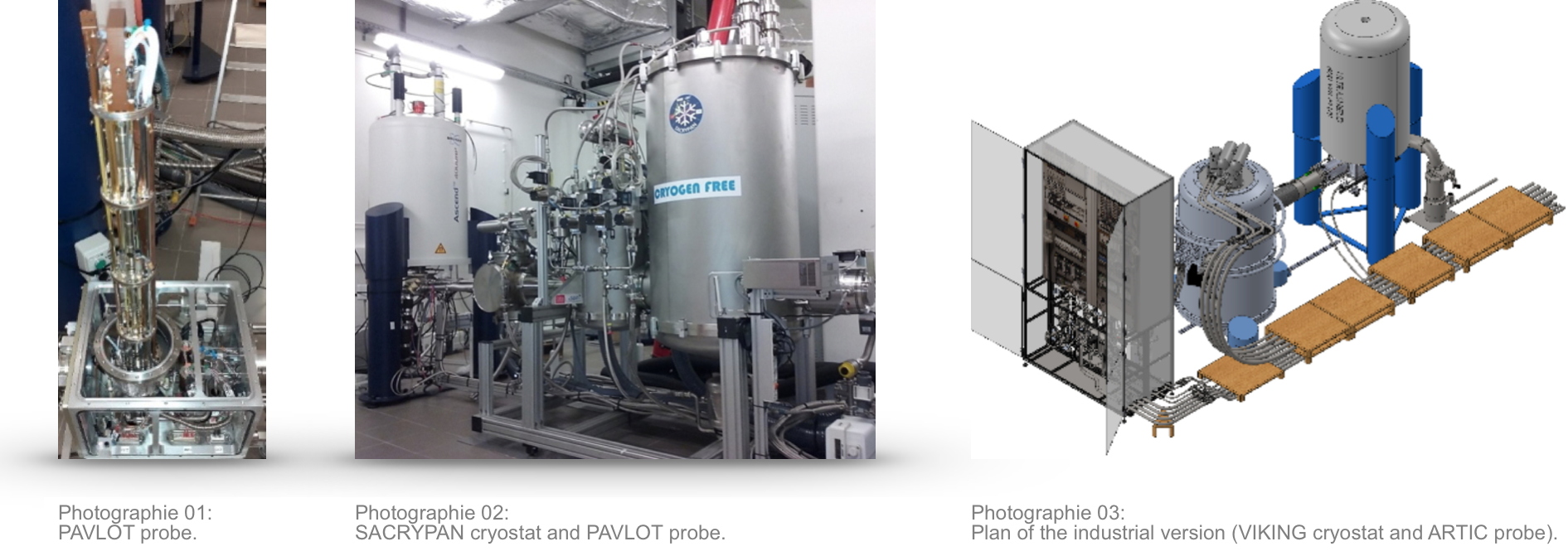Thanks to multiple methodological and instrumental developments, there is currently a range of complementary techniques that allow for fine characterization of the structure of materials. Nuclear magnetic resonance is one of these techniques and allows the acquisition of spectral data often unique, but sometimes requiring very long acquisition and data processing times. An improvement of this technique, called Dynamic Nuclear Polarization (DNP), consists in hyperpolarizing a rotating sample at very low temperature. This approach increases the sensitivity of conventional solid-state NMR by several orders of magnitude. However, with the instruments commercialized until now, it was not possible to work below 100K, while controlling the rotation frequency of the sample holder.
We have devoted more than ten years of research and development to overcome these numerous technological obstacles, meeting the requirements of very low temperature analysis. The fruit of their work includes several proofs of concept of mechanical, thermal and fluidic architectures, protected by a portfolio of several international patents. The latest patent concerns the innovation of the cryogenic system, which manages to preserve the thermal performance thanks to the subtlety of the mechanisms so as not to disturb the analyses.
The last step of R&D was carried out in partnership with engineers from BRUKER, a world leader in NMR instrumentation. This allowed the finalization of the assembly of the detector-probe on site, in Grenoble. It is worth noting the technical feat of assembling the various components, meticulously interlocked like "Russian dolls", in the hollow of the magnet of only 76mm in diameter: PAVLOT is an ultra-compact cryostat that could fit in a shoebox! The probe is combined with the "SACRYPAN" conditioning device, autonomous in cryogenic fluid, to operate continuously at the very low temperature of 40K. Moreover, thanks to a rotation frequency of 10,000 revolutions per second, the characteristics of this high-level equipment make it one of the world's reference figures. The instrument is in operation since the second half of 2021.
Scientific results previously unattainable even with the best prototypes have been obtained. From an environmental and economic point of view, the operation is much less energy consuming than the first prototype designed a few years ago. In fact, the daily supply of liquid helium, which cost a few thousand euros, has been advantageously replaced by an electrical connection powered for a few hundred euros. And compared to the only competing international prototype, this instrument developed by IRIG researchers consumes 5 times less energy. The development of the instrument continues. In addition to new scientific results, the design and development of an "industrial" version are well advanced with a view to technology transfer to an industrial company.
